-
 Bitcoin
Bitcoin $83,009.9241
0.10% -
 Ethereum
Ethereum $1,857.5607
1.81% -
 Tether USDt
Tether USDt $1.0000
0.01% -
 XRP
XRP $2.1129
0.92% -
 BNB
BNB $614.1058
2.33% -
 Solana
Solana $125.4322
-0.51% -
 USDC
USDC $1.0001
0.01% -
 Dogecoin
Dogecoin $0.1686
2.82% -
 Cardano
Cardano $0.6715
3.35% -
 TRON
TRON $0.2346
-0.33% -
 Toncoin
Toncoin $4.0460
1.26% -
 Chainlink
Chainlink $13.7924
2.86% -
 UNUS SED LEO
UNUS SED LEO $9.3060
2.39% -
 Stellar
Stellar $0.2699
1.08% -
 Avalanche
Avalanche $19.1120
1.62% -
 Sui
Sui $2.3837
5.61% -
 Shiba Inu
Shiba Inu $0.0...01268
3.39% -
 Hedera
Hedera $0.1685
3.45% -
 Polkadot
Polkadot $4.1572
3.12% -
 Litecoin
Litecoin $84.0307
2.26% -
 MANTRA
MANTRA $6.2377
-1.12% -
 Bitcoin Cash
Bitcoin Cash $307.8861
2.49% -
 Bitget Token
Bitget Token $4.5268
0.93% -
 Dai
Dai $0.9998
-0.01% -
 Ethena USDe
Ethena USDe $0.9997
-0.02% -
 Pi
Pi $0.7032
0.23% -
 Hyperliquid
Hyperliquid $13.1614
3.37% -
 Monero
Monero $216.8544
0.15% -
 Uniswap
Uniswap $6.0878
2.28% -
 Aptos
Aptos $5.2977
-0.73%
Why does the mining software not recognize my graphics card?
Mining software may not recognize your GPU due to loose connections, insufficient power, outdated drivers, or software incompatibility; check these first.
Mar 30, 2025 at 11:08 pm

Why Does My Mining Software Not Recognize My Graphics Card?
Troubleshooting GPU Recognition Issues in Cryptocurrency Mining
Cryptocurrency mining relies heavily on powerful graphics cards (GPUs) to solve complex mathematical problems. When your mining software fails to recognize your GPU, it effectively halts your mining operation. This can stem from several interconnected issues, ranging from simple driver problems to more complex hardware or software incompatibilities. Let's delve into the potential causes and solutions.
First, ensure your GPU is properly installed. This seems obvious, but a loose connection or faulty slot can prevent detection. Carefully reseat your GPU, ensuring it's firmly in place and the power connectors are secure. Insufficient power supply is another common culprit. Mining is power-hungry; your PSU might not provide enough wattage for your GPU under load. Check your PSU's specifications and ensure it can handle the demands of your mining rig.
Next, let's address driver issues. Outdated or corrupted graphics drivers are a frequent source of problems. Visit the manufacturer's website (Nvidia or AMD) and download the latest drivers specifically designed for your GPU model. Completely uninstall your existing drivers before installing the new ones using a dedicated uninstaller tool if necessary. This ensures a clean installation and avoids conflicts.
Software compatibility is another crucial aspect. Ensure your mining software is compatible with your GPU model and operating system. Check the software's documentation or support forums for confirmed GPU compatibility lists. Using an outdated or incorrect version of the mining software can also lead to recognition issues. Download the latest version from the official source.
Sometimes, the issue lies within the operating system itself. Reinstalling your operating system can resolve deep-seated conflicts that prevent GPU detection. This is a drastic measure, but it can be effective if other solutions fail. Remember to back up your data before attempting this.
BIOS settings can also interfere with GPU recognition. Check your motherboard's BIOS settings to ensure that the PCIe slots are enabled and configured correctly for your GPU. Consult your motherboard's manual for specific instructions on accessing and adjusting these settings.
Overclocking your GPU can sometimes cause instability and lead to recognition problems. If you've overclocked your GPU, try reverting to the default clock speeds. This allows you to isolate whether overclocking is the root cause of the issue. If it resolves the problem, you might need to adjust your overclocking settings gradually.
Finally, consider hardware faults. A faulty GPU is a possibility, although less common. Try testing your GPU in a different system to see if it's recognized. If it's not detected in another system, the GPU itself might be defective.
Troubleshooting Steps: A Summary
- Reseat your GPU: Ensure it's firmly connected and power cables are secure.
- Check your Power Supply Unit (PSU): Make sure it provides enough wattage.
- Update your Graphics Drivers: Download the latest drivers from the manufacturer's website.
- Verify Software Compatibility: Confirm your mining software is compatible with your GPU and OS.
- Reinstall your Operating System: A last resort to resolve deep-seated conflicts.
- Check BIOS Settings: Ensure PCIe slots are enabled and configured correctly.
- Revert Overclocking: Return to default clock speeds to rule out instability.
- Test GPU in Another System: To determine if the GPU itself is faulty.
Frequently Asked Questions
Q: My mining software only recognizes one of my two GPUs. What should I do?
A: This is a common issue. Check all connections, ensure both GPUs have sufficient power, and update drivers for both cards. Also, check your BIOS settings to ensure both PCIe slots are enabled. If the problem persists, try reseating both cards and reinstalling the mining software. In rare cases, one GPU might be faulty.
Q: My GPU is recognized in Windows, but not by my mining software. Why?
A: The mining software might have specific requirements or conflicts with other software running on your system. Ensure the software is compatible with your GPU and operating system. Try running the software with administrator privileges. Also, check for any conflicting processes running in the background.
Q: I've tried everything, and my mining software still doesn't recognize my GPU. What now?
A: If all the troubleshooting steps have failed, the problem might be hardware-related. The GPU itself could be faulty, or there could be a problem with the motherboard's PCIe slot or power supply. Consider seeking professional help from a computer repair technician. They can diagnose the problem more accurately and potentially repair or replace faulty components.
Q: What are the common causes of GPU recognition issues in mining?
A: Common causes include faulty connections, insufficient power, outdated or corrupted drivers, software incompatibility, operating system conflicts, incorrect BIOS settings, GPU overclocking issues, and hardware failures.
Q: My mining software shows my GPU, but the hash rate is very low. Is this related to GPU recognition?
A: Low hash rate is a separate issue, although it can sometimes be indirectly related to GPU recognition problems. If your GPU isn't properly recognized, it might not be functioning at its full potential. However, low hash rates can also be caused by other factors, such as insufficient cooling, overclocking instability, or driver issues. Ensure your GPU is adequately cooled and that your overclocking settings are stable.
Disclaimer:info@kdj.com
The information provided is not trading advice. kdj.com does not assume any responsibility for any investments made based on the information provided in this article. Cryptocurrencies are highly volatile and it is highly recommended that you invest with caution after thorough research!
If you believe that the content used on this website infringes your copyright, please contact us immediately (info@kdj.com) and we will delete it promptly.
- Expect “Strong Bullish Rally” for SUI if This Key Resistance Breaks: Top Analyst
- 2025-04-01 23:15:11
- MIND of Pepe (MIND) Emerges as a Contender in the Meme Coin Arena, Aiming to Outperform Dogecoin (DOGE) and Pepe (PEPE)
- 2025-04-01 23:15:11
- WAIB Summit Monaco 2025, the First and Largest Web3 Event in Europe
- 2025-04-01 23:10:12
- 5 Best Altcoins to Buy Now as Bitcoin (BTC) Market Cycle Enters a New Phase
- 2025-04-01 23:10:12
- Rexas Finance Surpasses Shiba Inu – Real-World Assets Drive Investor Confidence!
- 2025-04-01 23:05:12
- Kernel DAO (KERNEL) is a Revolutionary Restaking Protocol Operating on the BNB Chain
- 2025-04-01 23:05:12
Related knowledge
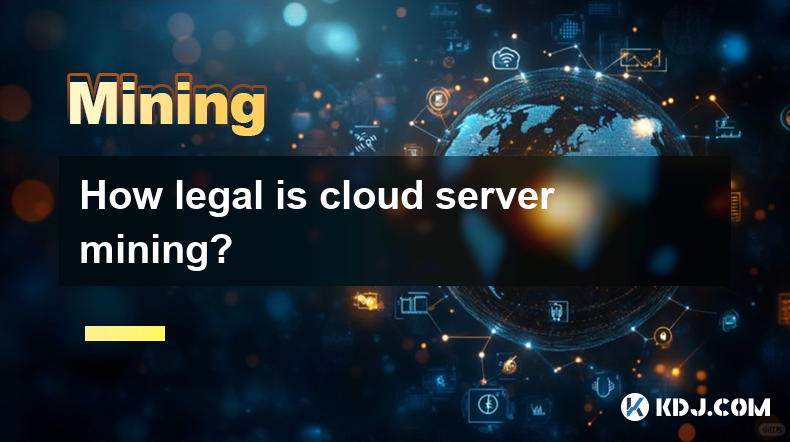
How legal is cloud server mining?
Apr 01,2025 at 08:08am
Cloud server mining has become an increasingly popular method for individuals and companies to participate in cryptocurrency mining without the need for expensive hardware and high electricity costs. However, the legality of cloud server mining can be a complex issue, as it varies by jurisdiction and depends on several factors. This article will explore...
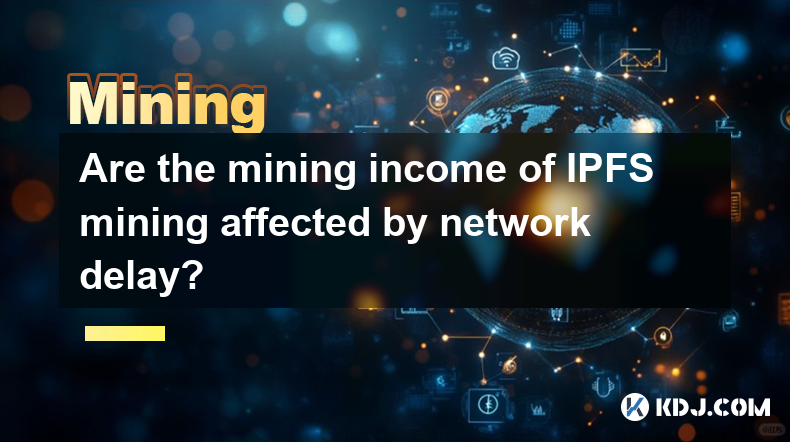
Are the mining income of IPFS mining affected by network delay?
Apr 01,2025 at 09:36pm
Are the Mining Incomes of IPFS Mining Affected by Network Delay? Understanding IPFS Mining and Network Delay's ImpactIPFS (InterPlanetary File System) mining, unlike Bitcoin mining, doesn't involve solving complex cryptographic puzzles. Instead, it focuses on providing storage and bandwidth to the network. Miners earn rewards for storing and sharing dat...
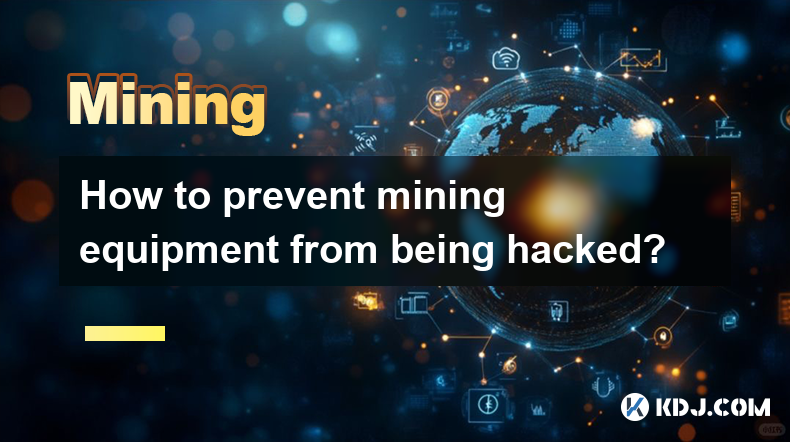
How to prevent mining equipment from being hacked?
Apr 01,2025 at 06:22am
Understanding the ThreatsCryptocurrency mining, while potentially lucrative, exposes your equipment to various cyber threats. These threats range from simple malware infections that steal your mining profits to sophisticated attacks that hijack your entire operation. Understanding these threats is the first step in effective protection. This includes r...
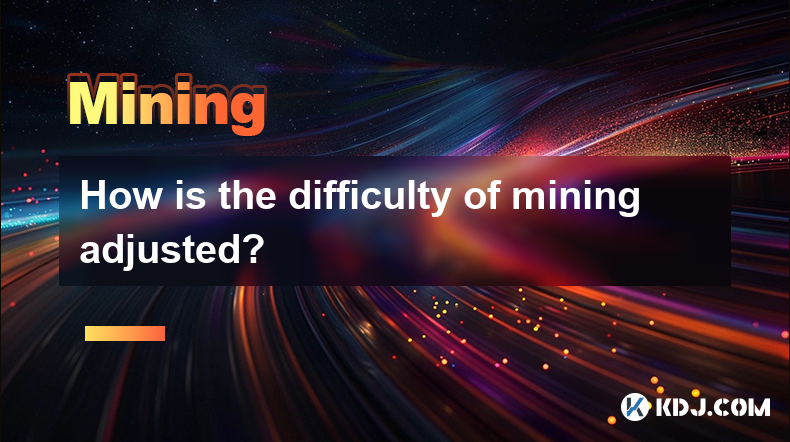
How is the difficulty of mining adjusted?
Apr 01,2025 at 07:14am
Understanding Bitcoin's Difficulty Adjustment MechanismBitcoin's mining difficulty is a crucial element ensuring the network's stability and security. It dynamically adjusts to maintain a consistent block generation time, approximately every 10 minutes. This adjustment prevents miners with overwhelming computing power from monopolizing block creation a...

How to purchase mining equipment for FIL mining?
Apr 01,2025 at 09:49pm
Understanding FIL Mining Hardware RequirementsFilecoin (FIL) mining, unlike Bitcoin mining, doesn't rely on ASICs (Application-Specific Integrated Circuits). Instead, it utilizes storage-based mining, requiring powerful storage hardware and a robust network connection. This means you'll need to invest in storage servers, often referred to as storage no...
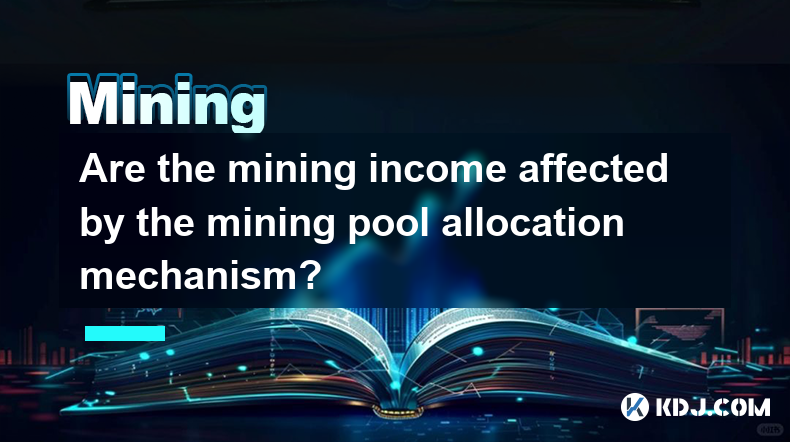
Are the mining income affected by the mining pool allocation mechanism?
Mar 31,2025 at 05:49pm
Understanding Mining Pool Allocation MechanismsMining pools aggregate the hashing power of many miners to increase the chances of successfully mining a block. The reward for successfully mining a block is then distributed among the pool's participants based on their contribution – usually measured in shares submitted. The allocation mechanism determine...

How legal is cloud server mining?
Apr 01,2025 at 08:08am
Cloud server mining has become an increasingly popular method for individuals and companies to participate in cryptocurrency mining without the need for expensive hardware and high electricity costs. However, the legality of cloud server mining can be a complex issue, as it varies by jurisdiction and depends on several factors. This article will explore...

Are the mining income of IPFS mining affected by network delay?
Apr 01,2025 at 09:36pm
Are the Mining Incomes of IPFS Mining Affected by Network Delay? Understanding IPFS Mining and Network Delay's ImpactIPFS (InterPlanetary File System) mining, unlike Bitcoin mining, doesn't involve solving complex cryptographic puzzles. Instead, it focuses on providing storage and bandwidth to the network. Miners earn rewards for storing and sharing dat...

How to prevent mining equipment from being hacked?
Apr 01,2025 at 06:22am
Understanding the ThreatsCryptocurrency mining, while potentially lucrative, exposes your equipment to various cyber threats. These threats range from simple malware infections that steal your mining profits to sophisticated attacks that hijack your entire operation. Understanding these threats is the first step in effective protection. This includes r...

How is the difficulty of mining adjusted?
Apr 01,2025 at 07:14am
Understanding Bitcoin's Difficulty Adjustment MechanismBitcoin's mining difficulty is a crucial element ensuring the network's stability and security. It dynamically adjusts to maintain a consistent block generation time, approximately every 10 minutes. This adjustment prevents miners with overwhelming computing power from monopolizing block creation a...

How to purchase mining equipment for FIL mining?
Apr 01,2025 at 09:49pm
Understanding FIL Mining Hardware RequirementsFilecoin (FIL) mining, unlike Bitcoin mining, doesn't rely on ASICs (Application-Specific Integrated Circuits). Instead, it utilizes storage-based mining, requiring powerful storage hardware and a robust network connection. This means you'll need to invest in storage servers, often referred to as storage no...

Are the mining income affected by the mining pool allocation mechanism?
Mar 31,2025 at 05:49pm
Understanding Mining Pool Allocation MechanismsMining pools aggregate the hashing power of many miners to increase the chances of successfully mining a block. The reward for successfully mining a block is then distributed among the pool's participants based on their contribution – usually measured in shares submitted. The allocation mechanism determine...
See all articles























































































